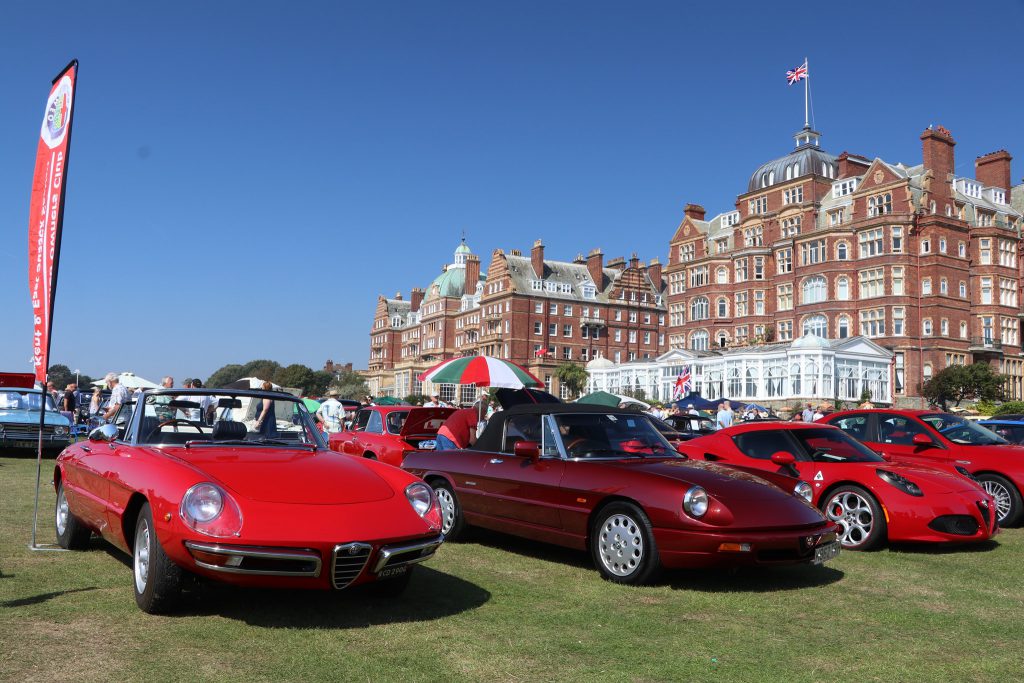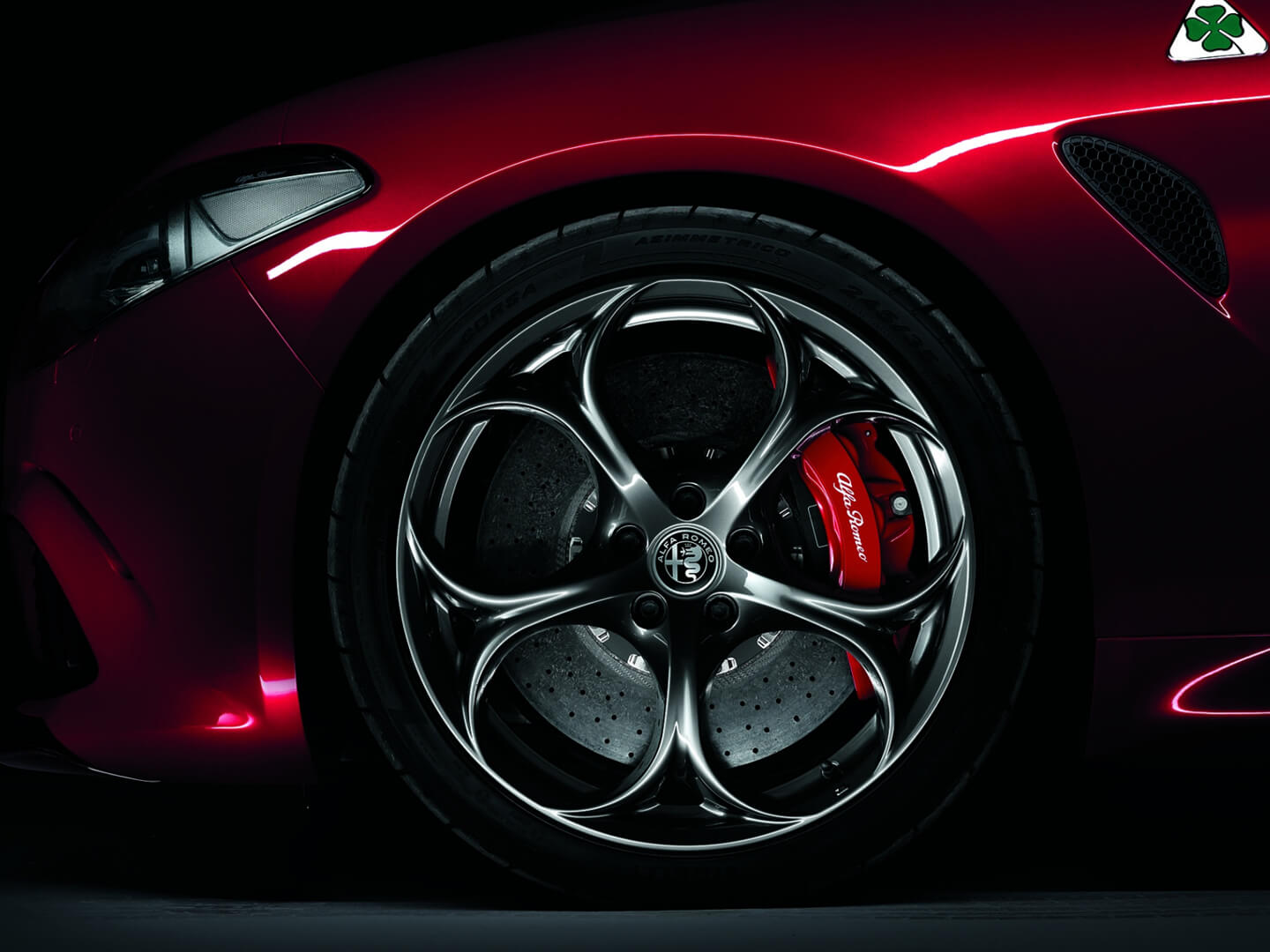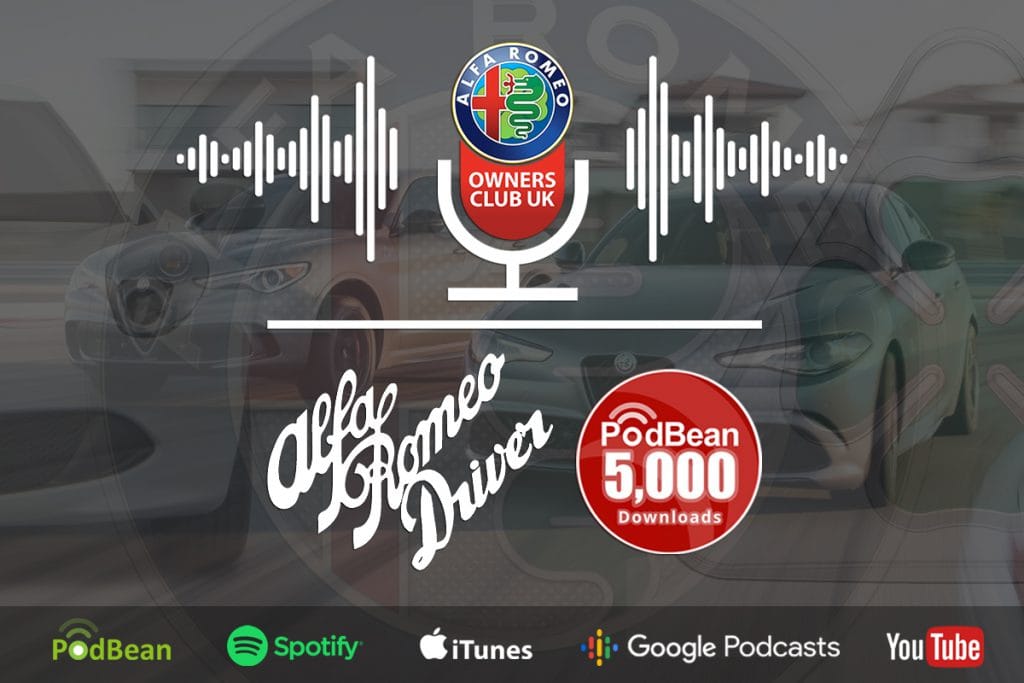Grand Old Timer Rally 2019

No show season in the South East would be complete without attendance at one of the best later shows in the classic car show series, and that has got to be The Grand Old Timer Rally, in front of – the building that does not like to be called a hotel – the Grand on the Leas at Folkestone.

This classic car show has The Grand as the backdrop, organised by owner and vintage car enthusiast Michael Stainer. Covering the show would not be complete without a history of this building as a compliment to the Grand Old Timer Rally itself as its history is equally as interesting as each and every individual car that attends here. Car rallies have been held here at least since 1896 – just before the first London to Brighton car run.
In its day, Folkestone was one of the most fashionable and prosperous coastal resorts. The Metropole, which stands immediately next door, had just been constructed and a local builder, who had been disappointed not to secure the building contract, became determined to build a rival establishment which was much better.
The builder, Daniel Baker, was in the forefront of innovative design; he had already developed the use of cavity wall ties, and went one better with The Grand with waterproof cavity wall insulation. He used a steel frame (one of the first) to give the large clear spans to the main reception rooms and, said to be a world first, in-filled it with reinforced concrete. There were also suspended ceilings for improved soundproofing. Keith Baker one of our committee members has had a hand in designing some of the latter additions to the structure.
Not only was Mr Baker innovative, but also he was able to utilise new techniques to excellent effect. The steel frame allowed his formative use of curtain walling resulting in the windows, covering almost the entire width of the elevations, to make the most of the sunny location and the fabulous views. A by-product of the concrete floors was one of the first examples of wall-to-wall carpeting.
The building was constructed as a gentleman’s residential chambers, and immediately established a reputation as the place to be and be seen. The King, Edward VII, became a frequent visitor, so much so that the locals would wander along The Leas in front of the building to peer into the glasshouse to catch a glimpse of him. Apparently, because the King and his friends were heavily bearded, it became likened to looking at monkeys in a cage, hence its local name “Monkey House.”
The King came not only with the Queen but also his intimate friend, Alice Keppel, an hour-glass blue eyed beauty, the epitome of Edwardian elegance, who had a lively wit and much discretion – popularising the expression “monkey business.” The King favoured three piece suits which are still known today as “monkey suits” in America.
Although the lower bar area, now known as Keppels, was then surrounded by an earth bank to keep out prying eyes, which Mrs Keppel’s great grand-daughter the Duchess of Cornwall might appreciate, this was more to do with the absence of a drinks licence. When the local landowner, the Earl of Radnor granted the lease for the building of The Metropole he accepted a condition that he would not allow another hotel to be built within 600 yards. Hostilities commenced even before the laying of bricks and became so acrimonious that Lord Radnor and Daniel Baker fenced off The Leas to prevent Metropole patrons gaining access! Today there is an open vista upon which The Grand Old Timer Rally now displays.
During WWI the building was used as a refuge for the Belgian royal family and as a military hospital. Thereafter, the Prince of Wales’s patronage, later Edward VIII, assisted with The Grand’s resurgence and although Mrs Simpson stayed a little way away she was always present. Was it not for Wallace Simpson we would not have our present Queen … The Grand could quite possibly be responsible for this in the liberal attitude it held.
Ward Lock’s guide described The Leas outside the front door of The Grand as “Indisputably the finest marine promenade in the world”. Robert Morley made his stage debut here, as did Michael Caine – not a lot of people know that! Albert Sandler started the Palm Court Orchestra in the Monkey House, but all were driven away from frontline Folkestone by the fall of France in WWII. The building was badly damaged by shelling from the French coast. There are still around one hundred unused rooms in The Grand bearing the scars of the shelling and are currently awaiting restoration. It may take more than one Michael Stainer (the current owner) to eventually restore the whole building to its former glory.
In 1909 the King opened the new ballroom containing the first sprung dance floor in Europe. The first dance he took with the Queen, and the second with Mrs Keppel. A medal was struck to commemorate the event, and the King allowed the royal coat of arms to be used to publicise the establishment.
To overcome the liquor problem, patrons’ requirements were summoned from the local public houses by telephone, and a lad would deliver them by bicycle! An underground cavern was excavated below Keppels Bar and accessed by hidden stairs to secrete customers’ own supplies which incorporated another new invention – refrigeration.
In the 1950s, when, “you never had it so good” and a slogan copied by the Thatcher Government in the 1980’s, it was Princess Margaret’s turn for the extravagant high life at The Grand (enough on that subject). Agatha Christie, who had been writing Murder on the Orient Express at the same time, stayed in one of the suites before the war and continued to visit the Grand regularly. But by the ‘60s rail travel was being supplanted by air travel to more distant and exotic playgrounds for the English rich set and rent controls were such that the sale of leases of the apartments became the favoured option.
The unrivalled public rooms have been restored to their former glory. Keppels Bar, at one time decked out in “Seventies Disco,” has had its years of embarrassing decor stripped away, and once more exudes its Edwardian ambience as an intimate bar and dining area. The Palm Court, or as historic locals called it “the Monkey House,” has acquired a tented ceiling along with a magical array of plants illuminated by a constellation of lights and at night has fine food and service to match. The adjacent oak panelled Tudor Room has a bar, sumptuous sofas and a collection of massive old oil paintings, which are catalogued as part of the national archive.
Many of the apartments, having stayed there myself, are still in need of an uplift and restoration but that said this is a magnificent building and Rome, like our Italian cars, was not restored in a day and are both the subject of continuous attention and maintenance.

Attending members this year were John Dray in The 4C with Sandra; Graham Duplock, but this time in his Austin Cambridge; Colin Craven in the boat tail Spider; Richard D’Cruze in a Jaguar (separate display); Pauline & Dave Welch in the S2 black Spider; Jane & Jeff Kaby in the 159 TBI; Liz & Michael Carlow in the red Brera; Laura & Fred Baker in the white two litre GTV; Andy Craker in the blue GTV6 with Vicky; Giovanni D’Avanzo & Jacky, who again produced a restaurant from the boot of the red 105 Bertone GTV; and, welcoming a new member of two months, Andy Kenward in the 2017 4C pictured below.









Graham Duplock’s A60 Austin Cambridge was sold to Graham’s father new for £820 in 1968 by Bromley Motor Works, Masons Hill, Bromley. Graham has retained all documentation including the sales receipts and this car was a cherished family possession used for long trips and outings by the family. Even then the car was garaged and used sparingly in the winter and this probably explains its condition today. In 1986 the A60 was laid up until 1995 where it was re-housed and put back on the road and only required minimal service items for the restoration. From 1999 it has only required brake wheel cylinders, water pump, steering kingpin, re-cored radiator, dynamo and cylinder head converted for lead free petrol – all the shiny work is mostly original. This car has been shown all over the U.K. The most wonderful thing is that all three daughters were taken to church to be married in this vehicle and it is one true personal treasure having now reached 112,000 miles. Now that is one hell of a car!!

Those of you that read the article dated the 17th of March for the Arras show https://www.arockes.org.uk/duetto-spider-1968-the-exposition-dautomabiles-et-motors-anciennes/
would not be surprised to see club R.A.V.E.R.A (literally translated as – Rally of the Lover of Old Vehicles of The Artois Region) from Arras displaying their vehicles, which they have done at this event for the last 15 years. I spoke with Daniel Guerin briefly to catch up from March to let him know the article had been published in our magazine “Alfa Driver” and noted a couple of vehicles that had been displayed in the concours there in March. Not surprisingly, as all were of exceptional quality, one of them took away a trophy for best in class. Namely the 1982 Suncar Arpege 1400 four cylinder.



There was also Daniel Guerin’s own 1937 Peugeot 1500 201 M four cylinder Cabriolet that was also quite amazing as well.
Now there is always something special that just completely blows everything else away at a car show and that particular vehicle is always personal to the individual. For me the absolute best car in the show was the 1935 4.5 litre Bentley “Blower.”



Things, however, are not always as they seem and when I was shown a manufacturer’s plate at the base of one of the door frames it read “Petersen Engineering and coachworks, Beaworthy Mill, Devon.” A little bit of research reveals this amazing vehicle is an authentic recreation of a “blower” so named because of the supercharger at the front and made in the 1920’s. The chassis is genuine from the 1930’s and the body is a Vanden-Plas style Le Mans assembly. The engine is a re-built 4.5 litre Bentley “R” – Type 6 cylinder power plant and modified for the supercharger built by Petersen Engineering. The supercharger is modelled on the Amhurst Villiers unit used by the Birkin racing team in the 1920’s. The gear box, meanwhile, is a modified Mk6 “R” – type Bentley . The whole ensemble now producing 235 BHP. There are high quality engineered aircraft-style dials in the cockpit made by Petersen’s to the Birkin team car pattern.
All in all a “mish-mash” of genuine, modified and recreated parts to produce a vehicle that “Bulldog Drummond” in the 1920’s would have been proud to drive. That said an amazing vehicle that won a major prize on the concours.
We all, however, came away at the end of the day with our own little unique reminder of the day in the form of the little commemorative plaque, and what a great day it was!





